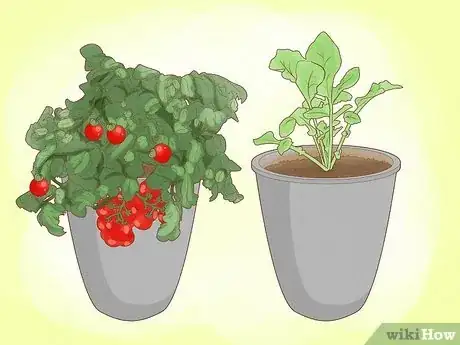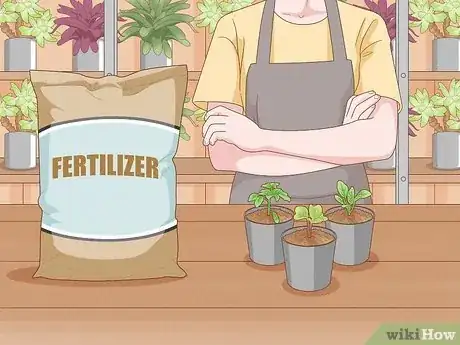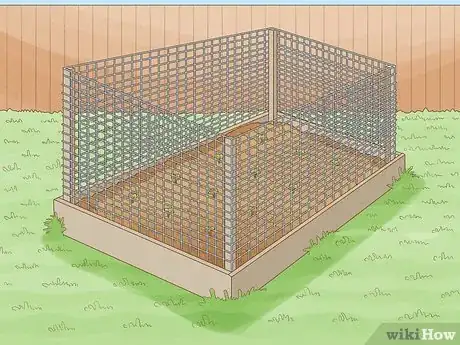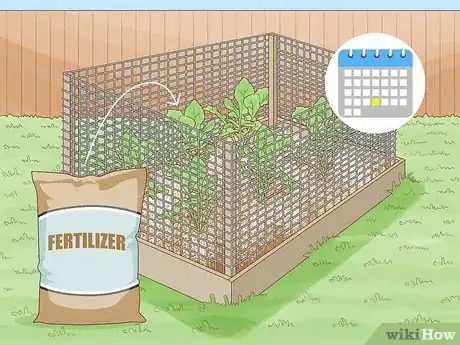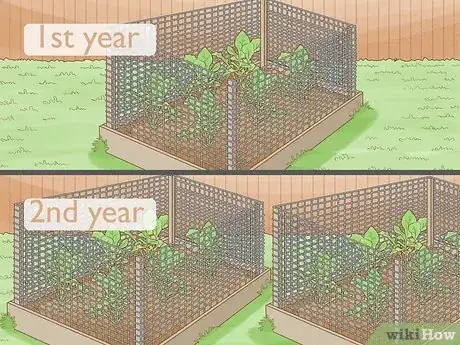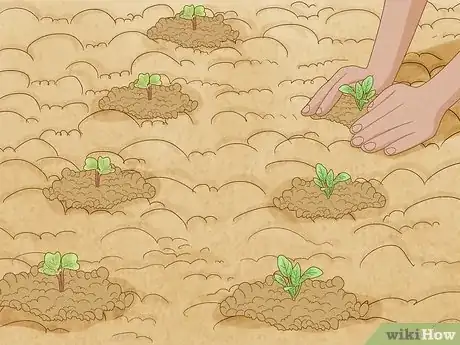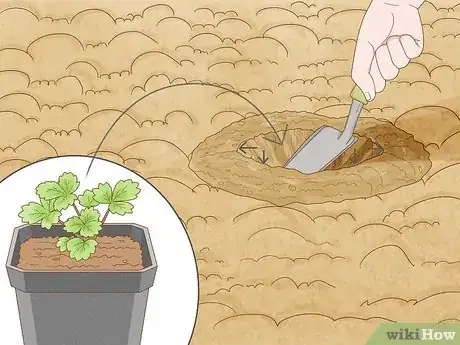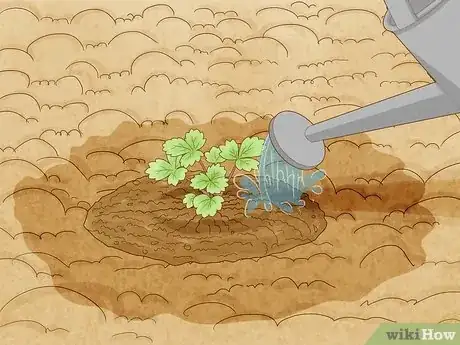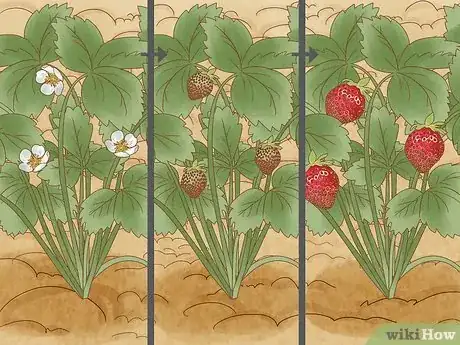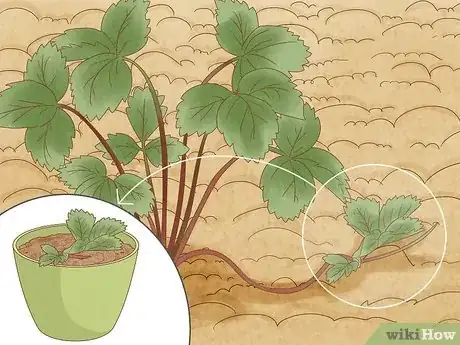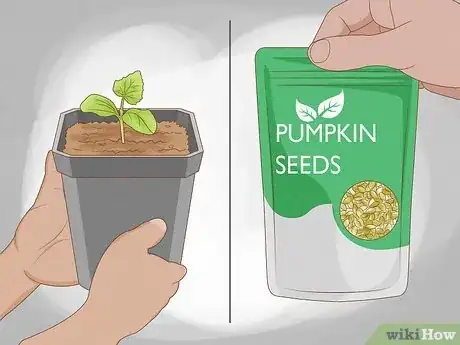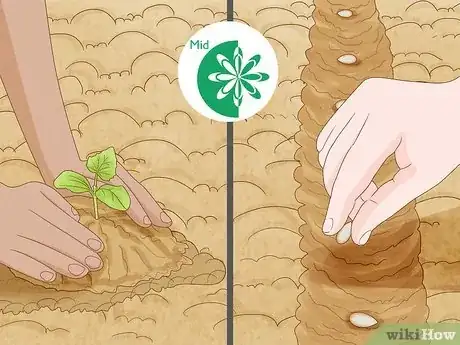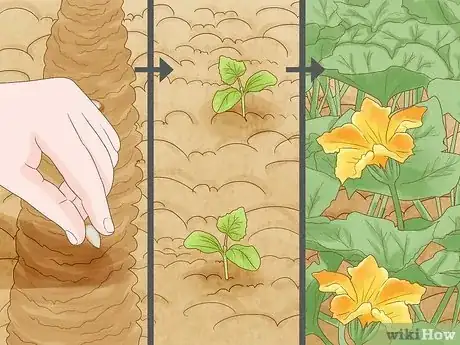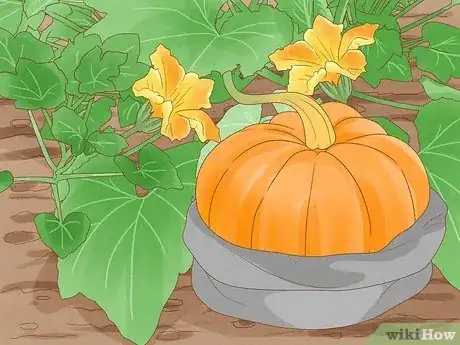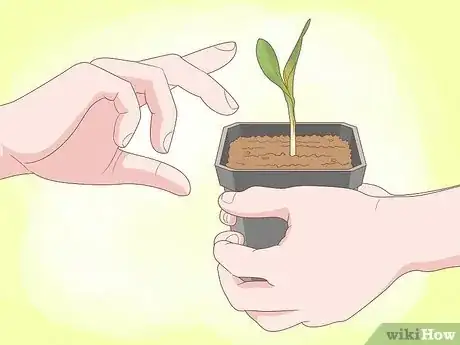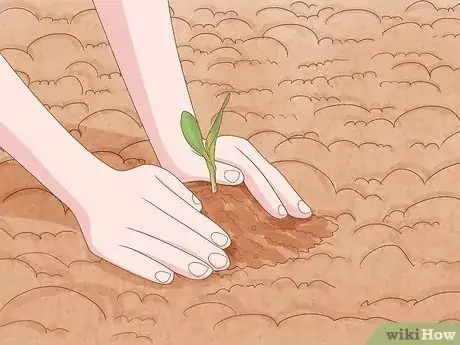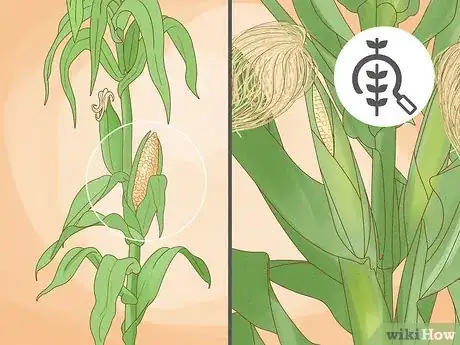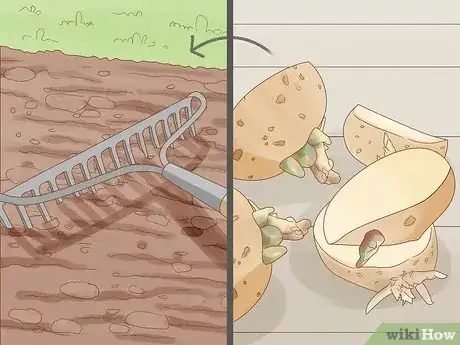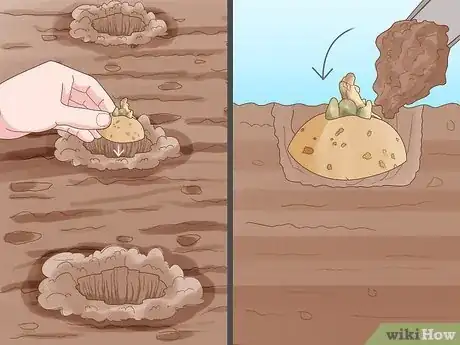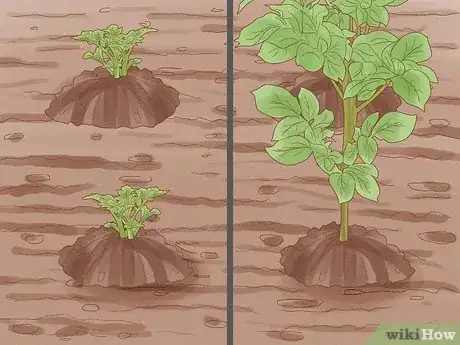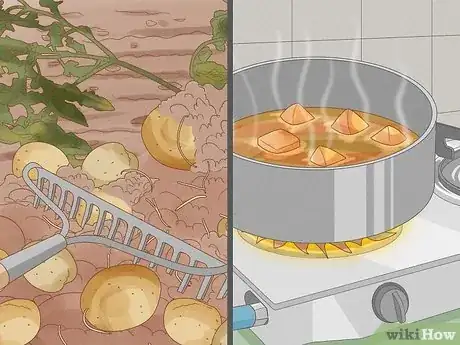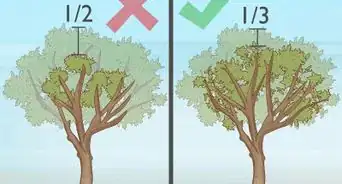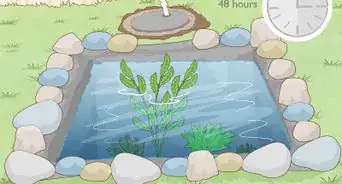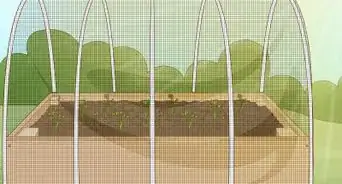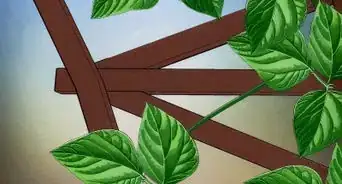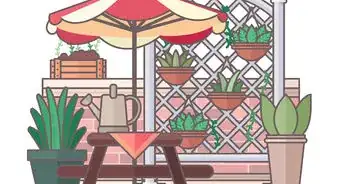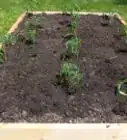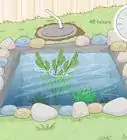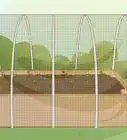This article was co-authored by Steve Masley. Steve Masley has been designing and maintaining organic vegetable gardens in the San Francisco Bay Area for over 30 years. He is an Organic Gardening Consultant and Founder of Grow-It-Organically, a website that teaches clients and students the ins and outs of organic vegetable gardening. In 2007 and 2008, Steve taught the Local Sustainable Agriculture Field Practicum at Stanford University.
This article has been viewed 26,016 times.
Many people want to grow their own food in their own backyard, but they don't know how to start and don't have the space. However, a vegetable garden doesn't need to be huge - small ones can be a great way to grow a few select vegetables, get a little food, and still get the gardening experience. Keep in mind that it may still eventually grow into a larger one! This article will also teach you how to grow certain crops!
Steps
Starting Out
-
1Find out what plants to get. Get plants that can grow in your area, and make sure you plant them at the right time of the year. If you plant them too early or too late, they could freeze and die before you can harvest your vegetables. Usually you should start your garden after the last frost date in the spring.[1]
- While they're technically fruits, a good starter plant to grow is tomatoes. You can plant these in a pot or in your garden. Radishes are also an easy beginner plant.
-
2Plan out your garden. Make sure there is enough space to grow your plants. Use a tiller and till the whole space you will be gardening. Then pull out any weeds and move any large rocks. Things like pumpkins and squash take up lots of space. Make sure they don't strangle other plants. Find out how big your plants get and space them accordingly. Make sure the ground is warm enough and has good drainage to bear your plants. If your plant needs slightly acidic soil, get an acid meter and make sure the soil has enough acidity. Some plants that need acidity are tomatoes and blueberries. You can buy fertilizer that can add acidity to the soil.Advertisement
-
3Buy your plants. You can either get seeds or get plant starts (where the seeds are already planted). Go to your local nursery and see what they have. Get fertilizer as well. Make sure to get the right fertilizer for your plants. This will make your plants grow better and faster!
-
4Plant your plants in the garden.
- For plant starts, use a hand shovel and dig a small hole big enough to put your plant in. Water your plant before you put it in so you can moisten the root ball and less the shock on the plant when you plant it. Sprinkle in a little bit of fertilizer and put your plant in. Then surround the plant with dirt and make a small circle around it for water.
- For seeds, stick your finger into the dirt where you want to plant the seed until the dirt reaches the second joint on your finger. Then sprinkle a little fertilizer in, place the seed inside, and bury it.
-
5Water your garden well until you can stick your whole finger in where the soil will be wet all the way to the tip of your finger. But don't over-water. This could drown your plant or its roots. Water until the soil is moist.
-
6Watch out for birds and deer. Try to buy a net that you can wrap around your garden, as wildlife (or even your own animals) can destroy your crops. Even if they take just a little bite out of your plant, it could pass a disease and kill it. So protect your crops!
-
7Watch your garden grow! If you planted seeds it will take a few weeks to germinate then sprout. Make sure its getting plenty of water and sun in this germinating process. Remember to water in the mornings. If a hot day happens, you may have to water two or three times that day. Then when the vegetables are ready, pick, wash, and eat them!
- Sprinkle the garden with fertilizer every 3-4 weeks.
Developing Your Garden
-
1Expand your garden! Add a few feet onto your garden in its second year. You can even create another garden in your backyard!
-
2Get more crops. Sadly, most garden crops don't come back each year like blueberries, strawberries, raspberries, and blackberries do. But don't worry. You can either go to the store and buy more plants, or you could get seeds out of your crops and prepare them to plant!
Growing Strawberries
-
1Get a strawberry plant from the store or buy seeds. Go to your local store and buy some strawberry plants. You will see it has some leaves, some roots, a crown (where the whole plant grows from), and maybe some fruit.
-
2Plant your strawberry seeds/plant. Find a pot. Dig a hole big enough to hold all of your roots. Then fill it in after you have put your strawberry plant in. Be careful not to bury the crown as it can rot. For the seeds, stick your finger into the dirt until your whole fingernail is covered. Place your small strawberry seed in and cover it lightly with dirt.
-
3Water your plant/seeds. Make sure to water well but not too much or the roots and plant will drown.
-
4Taking care of your strawberry plant. You will see flowers starting to come out. After the flower comes a little green strawberry. You will see this starting to swell. As it swells, the stem its on will be weighted and will start to droop. Try to tie it upright so the fruit doesn't touch the ground. This will make it rot. You will see your fruit turn white. This means its done swelling and it is full size. Finally it will start ripening in the sun and turn red. Once it hits a nice blood red it is ripe.
-
5Taking care of runners. What are those little vines sticking out of the strawberry plant? Those are called runners. You can put them in a pot. Once they take root you can cut the vine and bam! You have a new strawberry plant. Keep it out of direct sunlight for a few weeks as its leaves will wither. After a few months you will start to see it flower and fruit!
Growing Pumpkins
-
1Buy your pumpkin seeds. Go to a store and buy some pumpkin seeds. Pumpkins don't really come already planted. At least I've never seen them already planted but if you can find some, good for you!
-
2Plant your pumpkins. You want to plant them in Mid-Spring. If you found some pumpkin plants, dig a hole big enough to hold your pumpkin's roots, throw in some fertilizer, then put your plant in and fill the hole with dirt.
-
3Watch them grow! If you planted seeds, you will have to wait a few weeks for them to sprout. They may not all sprout. After they sprout they will grow very large leaves, about as big as you're head. Then you will see little vines starting to grow with little flower buds on the end. The flowers will then sprout and will get pollinated. After the flower is pollinated, you will see it wither off and die. Finally a little green pumpkin starting to swell where the flower was.
-
4Take care of the fruit. Once your pumpkin is heavy enough it will start to droop and touch the ground. Take a garbage bag and lay it out flat. Place the pumpkin on top of the bag so it wont rot when it touches the ground. When it rains, cover the pumpkin with plastic. If you don't it will get diseases. When the pumpkin reaches full size, it will start to ripen and turn orange. Once it is a nice orange and shiny, it is ripe!
Growing Corn
-
1Get your corn plants. You can get seeds or get plant starts. Make sure the plant starts you get don't have any brown patches as this can indicate disease.
-
2Plant your corn. In your garden find an area to plant your corn. Make a hole big enough to hold the corns roots, sprinkle in a little fertilizer, then place your corn inside. Fill in the hole. For seeds, make a little hole with your finger, place the corn seed inside, then cover it with dirt.
-
3Tend to your corn. The corn will start out like little blades of grass. If you see this starting to turn yellow, that means you are over-watering. The corn will keep growing. It needs to be "Knee high by fourth of July". You will see little corns starting to grow off of the plant. Once little silk tassels come out, give each corn plant a little shake to spread the pollen that's on the top of the plant. All it takes is one little tiny piece of pollen on one tassel to produce corn. After its done, you can pick them and store them for later eating. Maybe dinner that night.
Growing Potatoes
-
1This is a relatively easy plant to grow. Just follow these steps.
-
2Use potatoes that you don't use in cooking. If there is a few extra potatoes lying around you can use those. You can also buy some from the store.
-
3Get your garden ready as seen above. Potatoes are a bit different from other plants. Instead of seeds, most potatoes grow from... themselves. Sometimes if you look at a potato, it has little white things growing. Those are roots. And if you plant them it'll grow into potato plants!
-
4Plant your potatoes. Dig holes in your garden area where you want to put the potatoes. Put the potatoes into the holes and bury them.
-
5Watch them grow! Your potatoes will grow roots and will soon sprout into little plants.
-
6Harvest the potatoes. Once the plants are big and have flowers on them, wait until the flowers have been pollinated and the plants start turning yellow. That's when you know they are ready to be dug up. Just dig in the area that you planted the potatoes and you will find.. well.. potatoes! You can bake, grill, or boil them for a tasty meal!
Expert Q&A
Did you know you can get expert answers for this article?
Unlock expert answers by supporting wikiHow
-
QuestionWhat are the easiest plants to start growing?
 Steve MasleySteve Masley has been designing and maintaining organic vegetable gardens in the San Francisco Bay Area for over 30 years. He is an Organic Gardening Consultant and Founder of Grow-It-Organically, a website that teaches clients and students the ins and outs of organic vegetable gardening. In 2007 and 2008, Steve taught the Local Sustainable Agriculture Field Practicum at Stanford University.
Steve MasleySteve Masley has been designing and maintaining organic vegetable gardens in the San Francisco Bay Area for over 30 years. He is an Organic Gardening Consultant and Founder of Grow-It-Organically, a website that teaches clients and students the ins and outs of organic vegetable gardening. In 2007 and 2008, Steve taught the Local Sustainable Agriculture Field Practicum at Stanford University.
Home & Garden Specialist
-
QuestionI want to make a vegetable garden but my mom says I can't because we rent our house. Any tips?
 SophieCommunity AnswerA great idea is to make a container garden. You can make or buy a box/container made of wood or some other appropriate material then decorate it. Herbs are good for small boxes but you can grow things like lettuce from a piece. There are great articles on wikiHow about this and the best thing is you can take it with you if you move!
SophieCommunity AnswerA great idea is to make a container garden. You can make or buy a box/container made of wood or some other appropriate material then decorate it. Herbs are good for small boxes but you can grow things like lettuce from a piece. There are great articles on wikiHow about this and the best thing is you can take it with you if you move! -
QuestionI am container growing the red starter potatoes. I earthed up every 4" til the plants reached the top where they have been happily growing for 3 weeks. When will red potatoes flower?
 Community AnswerIt depends on their variety and climate. Continue to water and care for your plants until they flower. If they don’t, it’s okay! You can still harvest the potatoes and start over, maybe with a different variety of potatoes. Also, if you got your potatoes from a supermarket or farm, they may be sterile and will not flower. Try doing more research on your specific variety of red potatoes.
Community AnswerIt depends on their variety and climate. Continue to water and care for your plants until they flower. If they don’t, it’s okay! You can still harvest the potatoes and start over, maybe with a different variety of potatoes. Also, if you got your potatoes from a supermarket or farm, they may be sterile and will not flower. Try doing more research on your specific variety of red potatoes.
Warnings
- Don't harvest the plants until they are ready. They will be sour and unpleasant to eat.⧼thumbs_response⧽
- Don't under-water. Don't over-water either.⧼thumbs_response⧽
- Don't over-fertilize. It could burn your plants.⧼thumbs_response⧽
Things You'll Need
- Hand shovel
- Seeds
- Plant starts
- Fertilizer
- Source of water
- Place for garden
References
- ↑ Steve Masley. Home & Garden Specialist. Expert Interview. 20 March 2019.
